See the Mid-Engined 2020 Chevy Corvette from Every Angle

Michael Simari, Car and Driver
Let the C8 Corvette's designers take you on a tourof the new sports car's most interesting design elements.
In the automotive-design world, it doesn’t get much more pressure-packed than designing the mid-engined Corvette. It’s a mythical beast on which auto enthusiasts have been projecting their fantasies for decades, even lifetimes. If a unicorn is to finally step out from the shadows, it damn well better not look like an old mule with a horn. The team members behind the design and development of the C8 were aware of the expectations. It weighed on them. For years.
Executive chief engineer Tadge Juechter says that the mid-engined C8 Corvette couldn’t be the wild fantasy of the team’s inner adolescents. It had to be a durable design, one with a reasonably long shelf life. It still had to be immediately recognizable as a Corvette, despite having new proportions. But it couldn’t be retro, because that’s a design dead end. It had to be a sort of 1963 moment: a radical redesign of the shape that opens a new era in the model’s lineage and that telegraphs the sea change beneath its skin. And, heaven forfend, it could not, under any circumstances, be boring. Oh, it also had to have enough bandwidth to serve as an easy daily driver, an accommodating road-trip car, and an occasional track car.
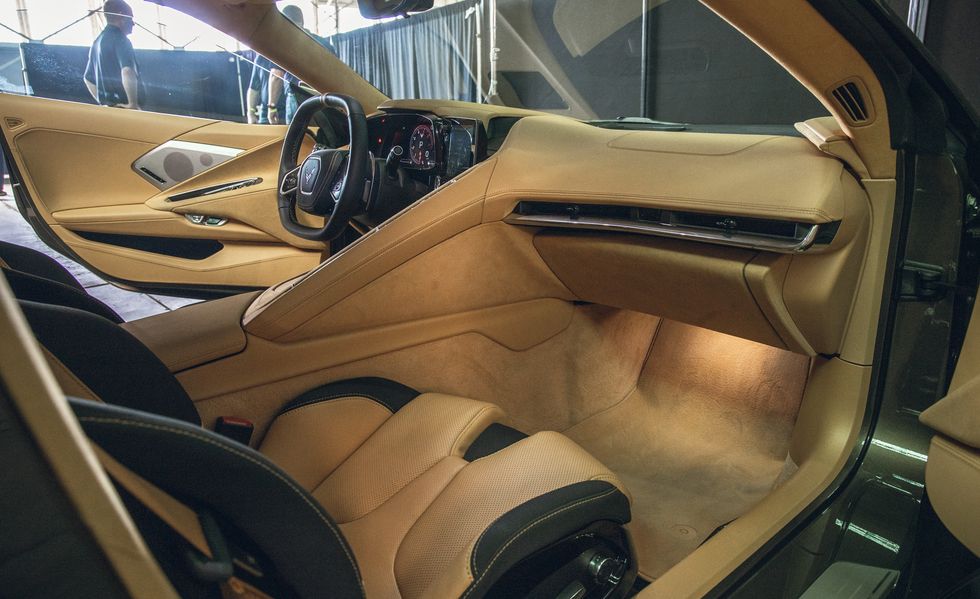
Michael Simari, Car and Driver
And such are the heat-dissipation and performance requirements and the packaging challenges of a mid-engined sports car that the stylists would just have to find ways to make the functional solutions beautiful. The result is, well, something of a wild adolescent fantasy nonetheless.
Tucking a V-8 between the occupants and the rear-wheel centerlines meant that the driver’s compartment moved forward 16.5 inches compared with the C7’s, hard up against the front wheel wells. Chevy claims (and we can confirm) that it’s much easier to enter and exit the C8 than most other mid-engined sports cars.
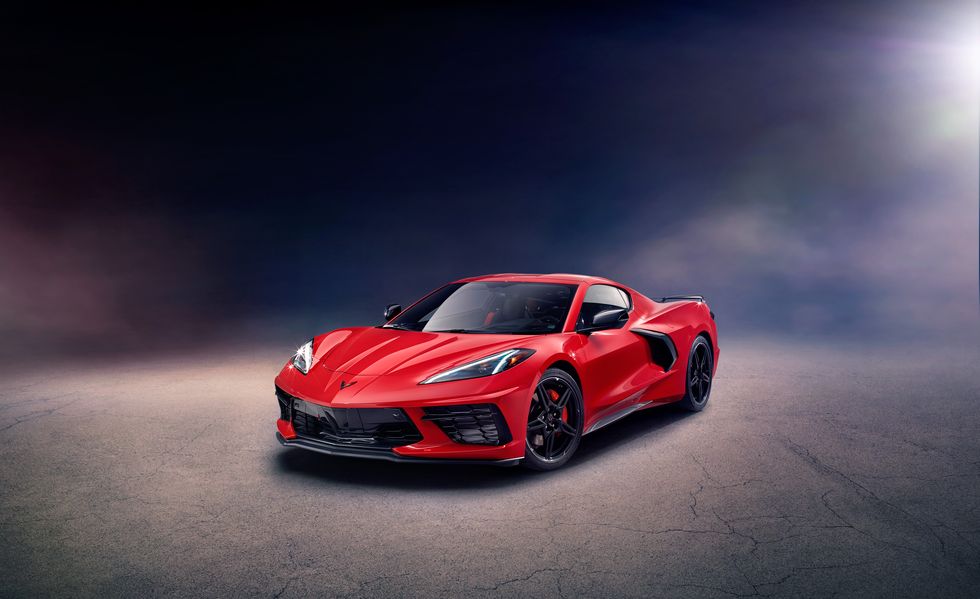
Greg Pajo, Car and Driver
From a front-three-quarters view, you can really see how much the rear bodywork flares out. “You’d be amazed at the size of the heat exchangers packed in there. There are twin fuel tanks, too, one on each side. It’s a packaging miracle,” says Juechter.
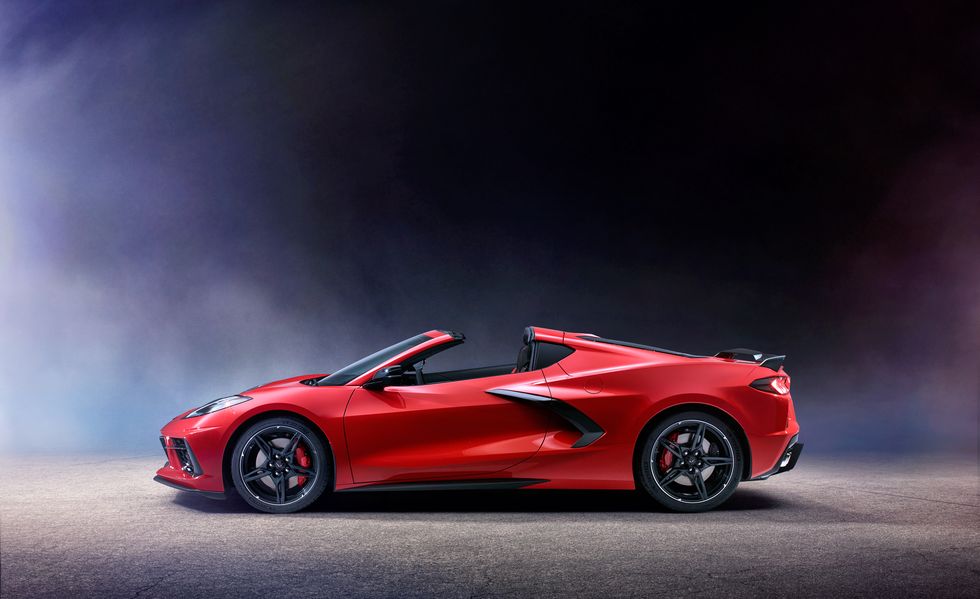
Greg Pajo, Car and Driver
Like many Corvettes past, the C8’s upper body tapers to a near point, accentuating the superwide rear fenders.
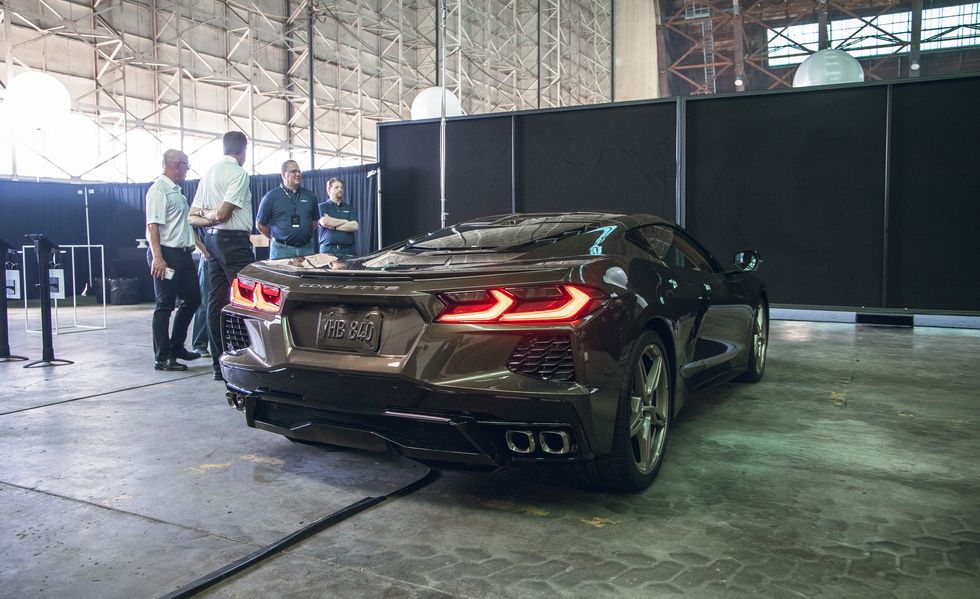
Michael Simari, Car and Driver
The exhaust tips are double-walled to deal with the extreme heat. Juechter says the LT2 V-8, which is standard in the C8, expels exhaust just as hot as that of the 755-hp C7 ZR1. Down at the bottom of the rear fascia is a heat-exhausting metal-mesh panel, behind which sits a muffler.

Greg Pajo, Car and Driver
Low-profile, horizontally oriented projectors allowed the fast angle of the headlights.

Greg Pajo, Car and Driver
The jagged cutline at the front of the frunklid looks like a self-conscious copy of the radar-foiling cutlines on an F-117 stealth fighter from decades ago. Corvette exterior design manager Kirk Bennion says that, because of the deep contours on the hood, when the Corvette is viewed from the right angle, the zigzag becomes a nice clean line. Improbably, almost inconceivably, he’s right.

Greg Pajo, Car and Driver
According to Juechter, “Design had to come to the party to solve technical problems.” Case in point: The large side scoops perform multiple functions, incorporating fans and radiators. The engine inhales from the top portion of the opening, where the air is coolest. The leading edge of the scoop also hides the door release. The black edge, which serves to visually break up the longish wheelbase, will be available in body color as well.
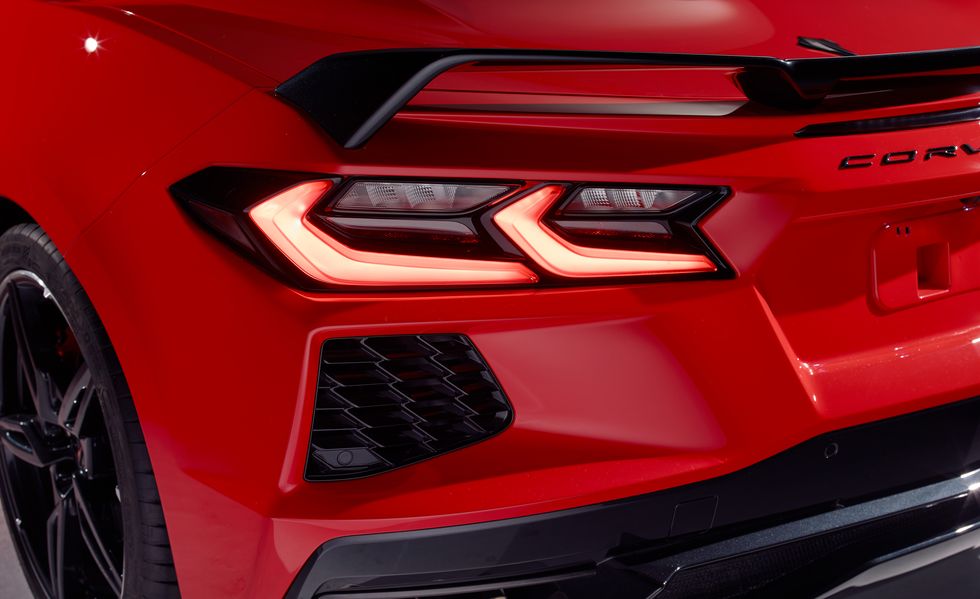
Greg Pajo, Car and Driver
You can just go ahead and forget about round taillights. They’re two generations gone now. Says Juechter, “Someday we’ll go back to them and everyone will be pissed off.”

Chevrolet
The rear window is flanked by heat-exhausting vents, and the trailing edge of the glass hovers about a quarter-inch over the bodywork. There’s a distinct Lamborghini-like look to this bit of the design. Chevy did not respond to that observation.
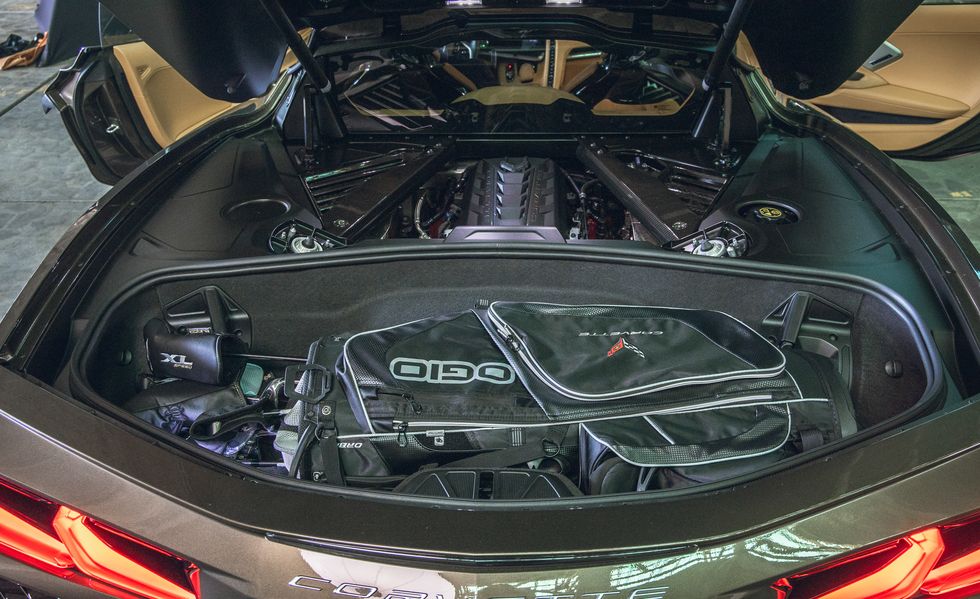
Michael Simari, Car and Driver
The rear cargo hold is large enough to fit the C8’s standard removable roof panel. Locating that directly behind the engine meant that Chevy couldn’t do what many supercar makers do and devote the whole rear end to evacuating heat.
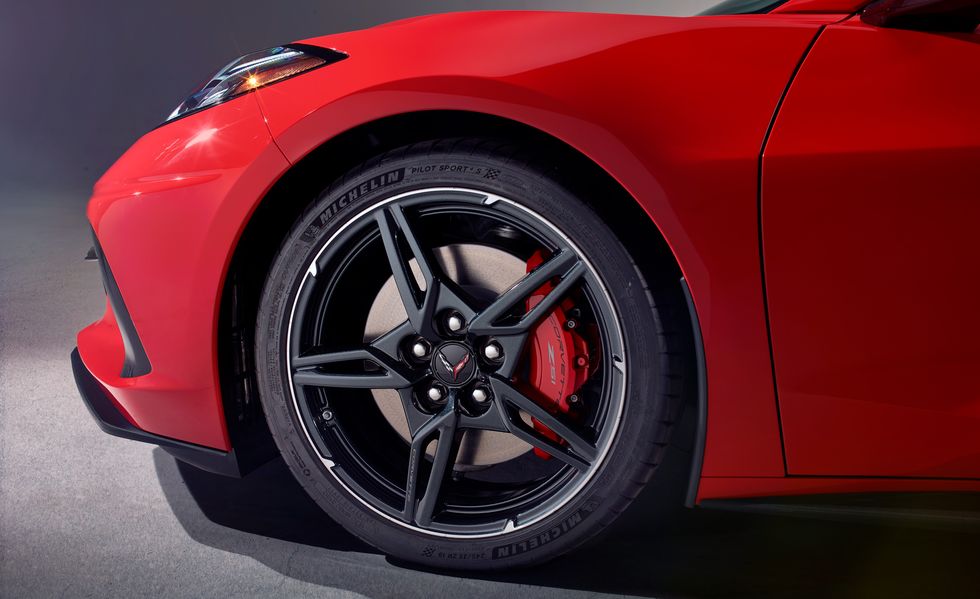
Greg Pajo, Car and Driver
This is one of two wheel designs to be offered on the C8. This five-split-spoke wheel is joined by what Chevy calls the “trident spoke” wheel seen on many of the camouflaged prototypes. There are six available wheel finishes, and Juechter proudly notes that “none of them are chrome.” On that news, tens of thousands of men in Tommy Bahama shirts just cried out in disgust.
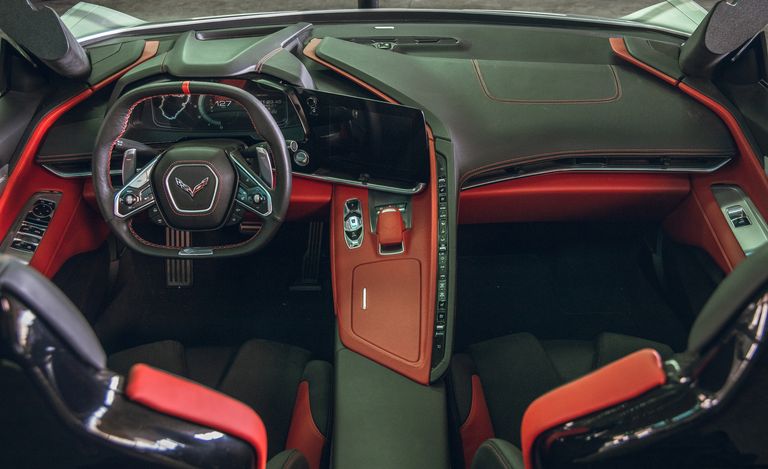
Michael Simari, Car and Driver
If a flat-bottomed steering wheel is cool, shouldn’t a steering wheel with both a flat bottom and a flat top be doubly cool? The engineering side was initially skeptical about the shape. But interior designers note that it doesn’t obstruct the view of the standard digital instrument screen as much as a round wheel would.
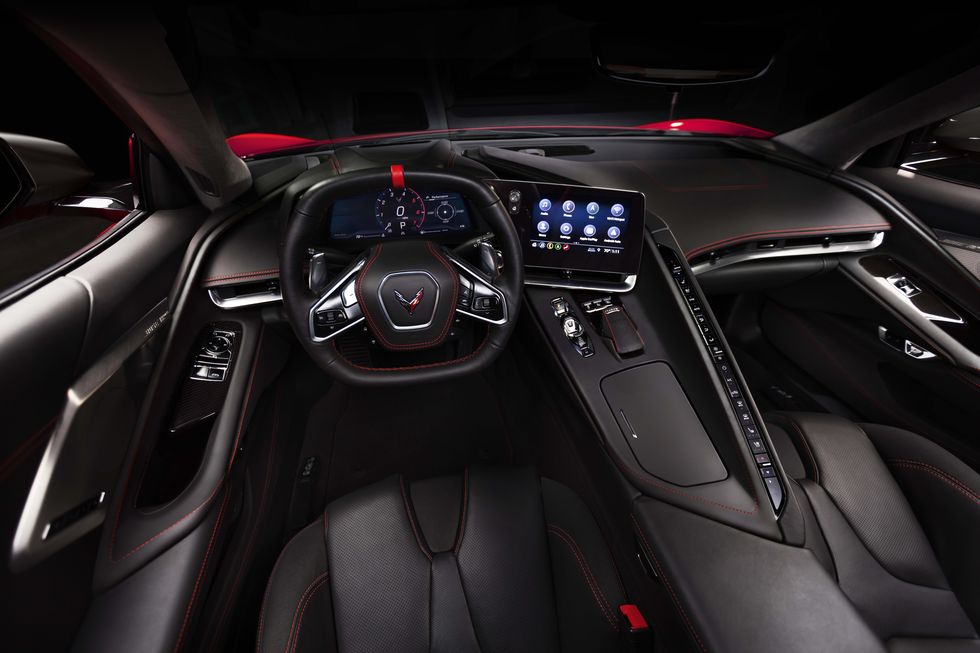
Chevrolet
The center console is not so much a center console as it is a cube wall, one with a row of tiny buttons on top. It’s part of an extreme makeover of the Corvette interior that also includes cupholders where a manual shifter would (should?) be.
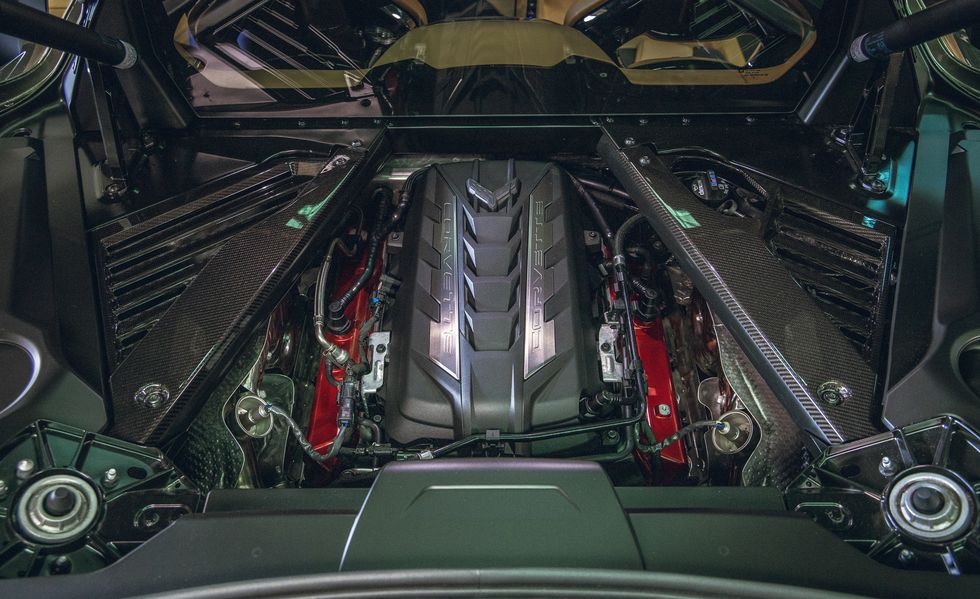
Michael Simari, Car and Driver
Compared with those of previous Corvettes, more of the C8’s innards are visible from the outside. The large, fast windshield puts the interior on display, and the engine can be seen through the rear glass. The LT2 6.2-liter V-8’s valve covers get a coat of deep-red paint standard. Buyers will be able to have their brake calipers painted the same color.

Chevrolet
Because the C8 Corvette has a decent-size frunk in the middle of the nose, the front-mounted heat exchangers had to be moved to the corners. Those horizontal ribs over the openings are there to meet pedestrian-protection requirements.
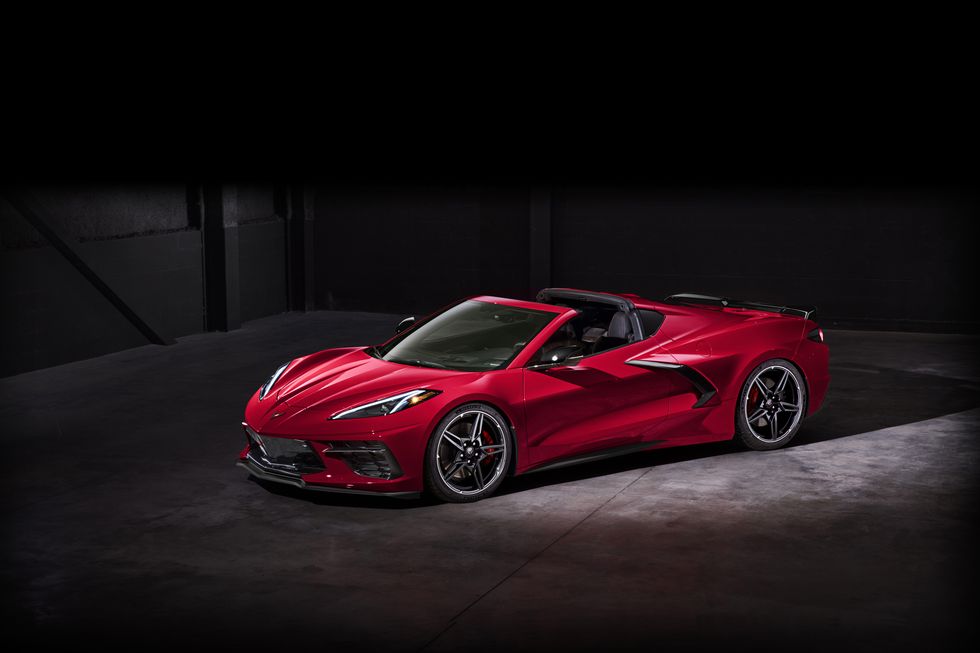
Chevrolet
“We have a lot of equity in our brand. We don’t want to be seen as someone else. So, you see cues from earlier Corvettes, like the peaked fender,” says Bennion. Adds Juechter, “We try to respect our past but always move the ball downfield.”
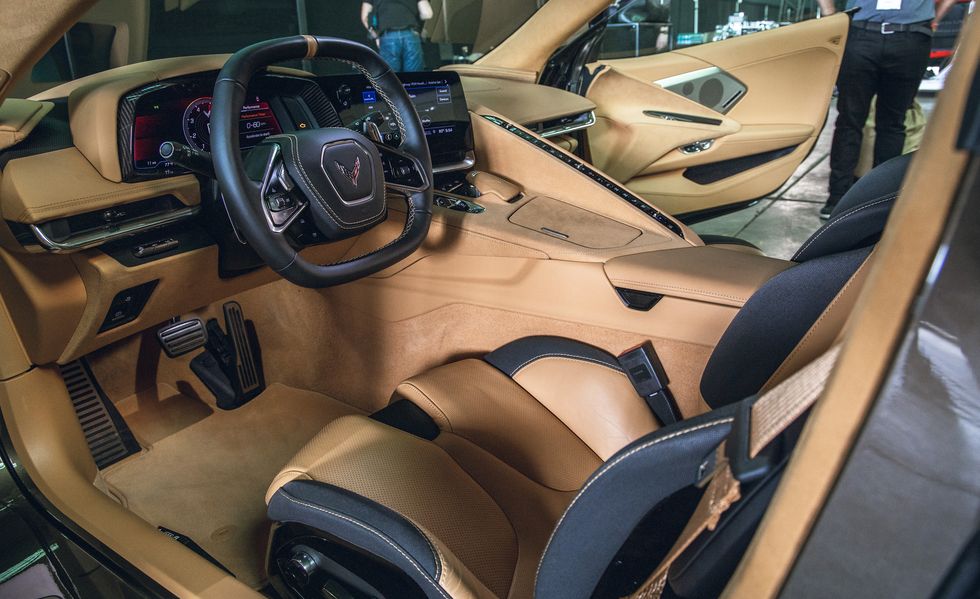
Michael Simari, Car and Driver
“You can’t call it plasticky anymore,” says Juechter of the new Corvette’s interior. And, indeed, the model we sat in was covered in leather and carbon fiber. (Yes, we’re awarae that carbon fiber is a variety of plastic.) Small leather-wrapped panels appear to hover over the dashtop.
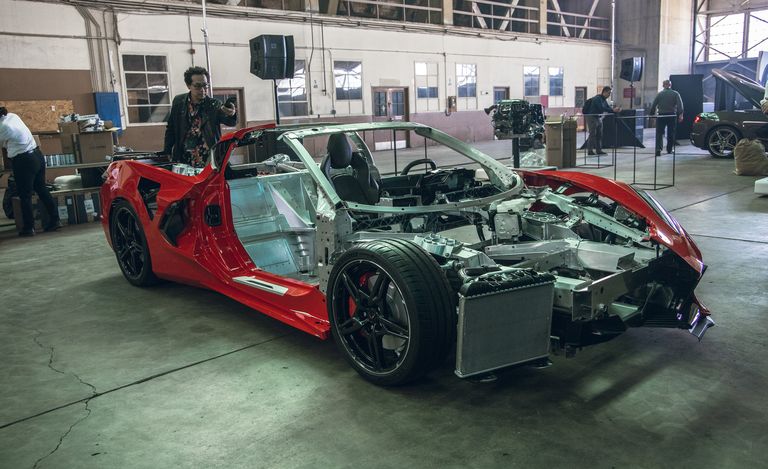
Michael Simari, Car and Driver
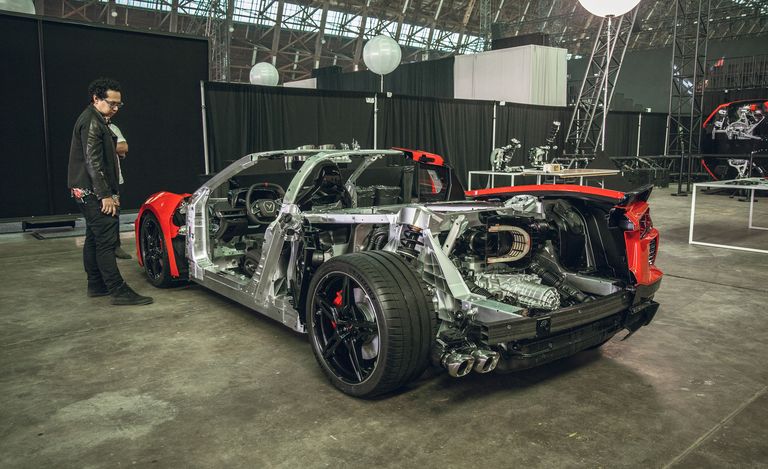
Michael Simari, Car and Driver
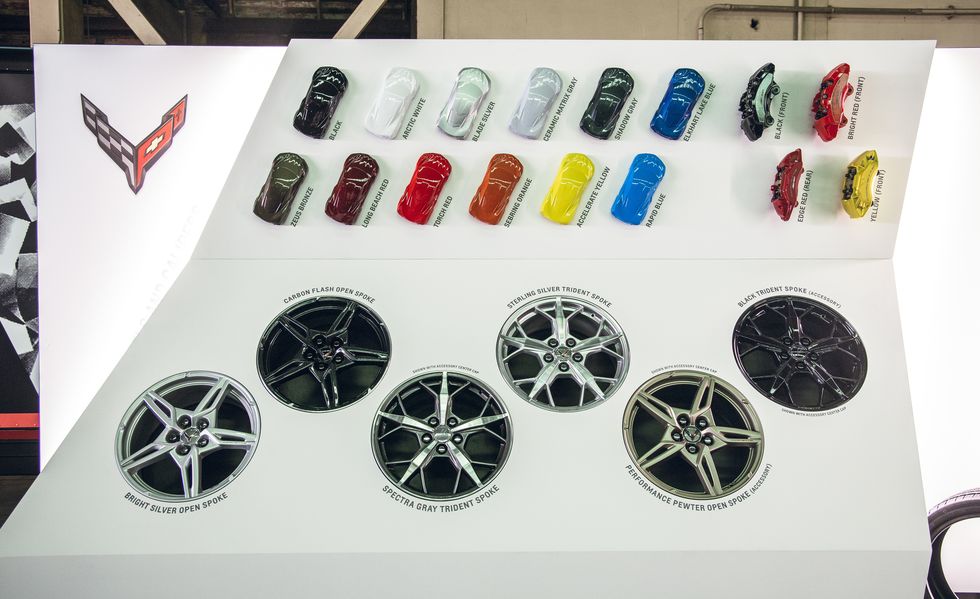
Michael Simari, Car and Driver

Michael Simari, Car and Driver
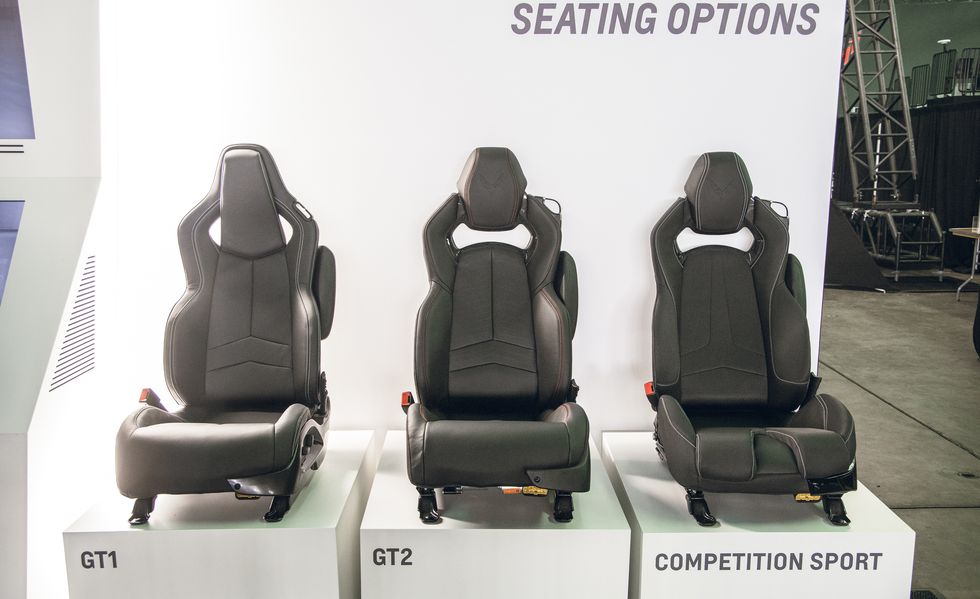
Michael Simari, Car and Driver
SOURCE: Car and Driver